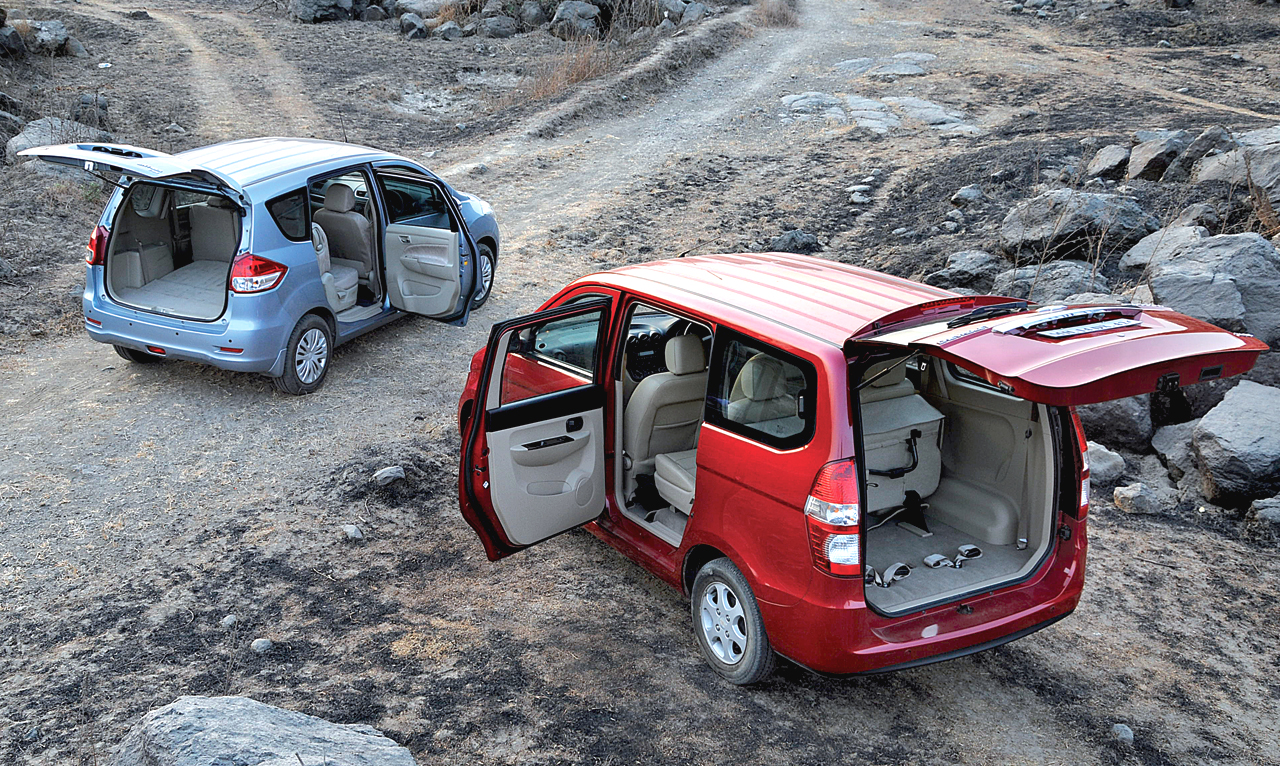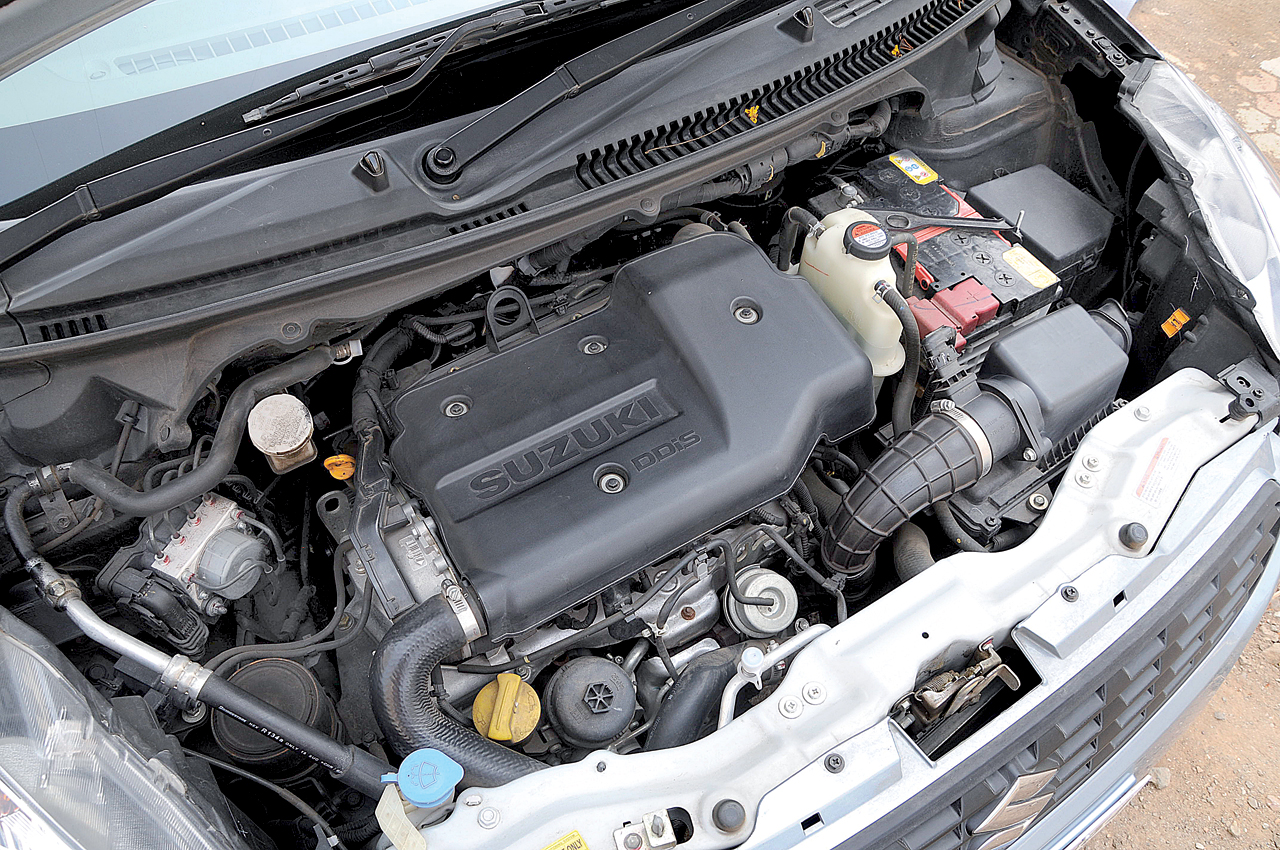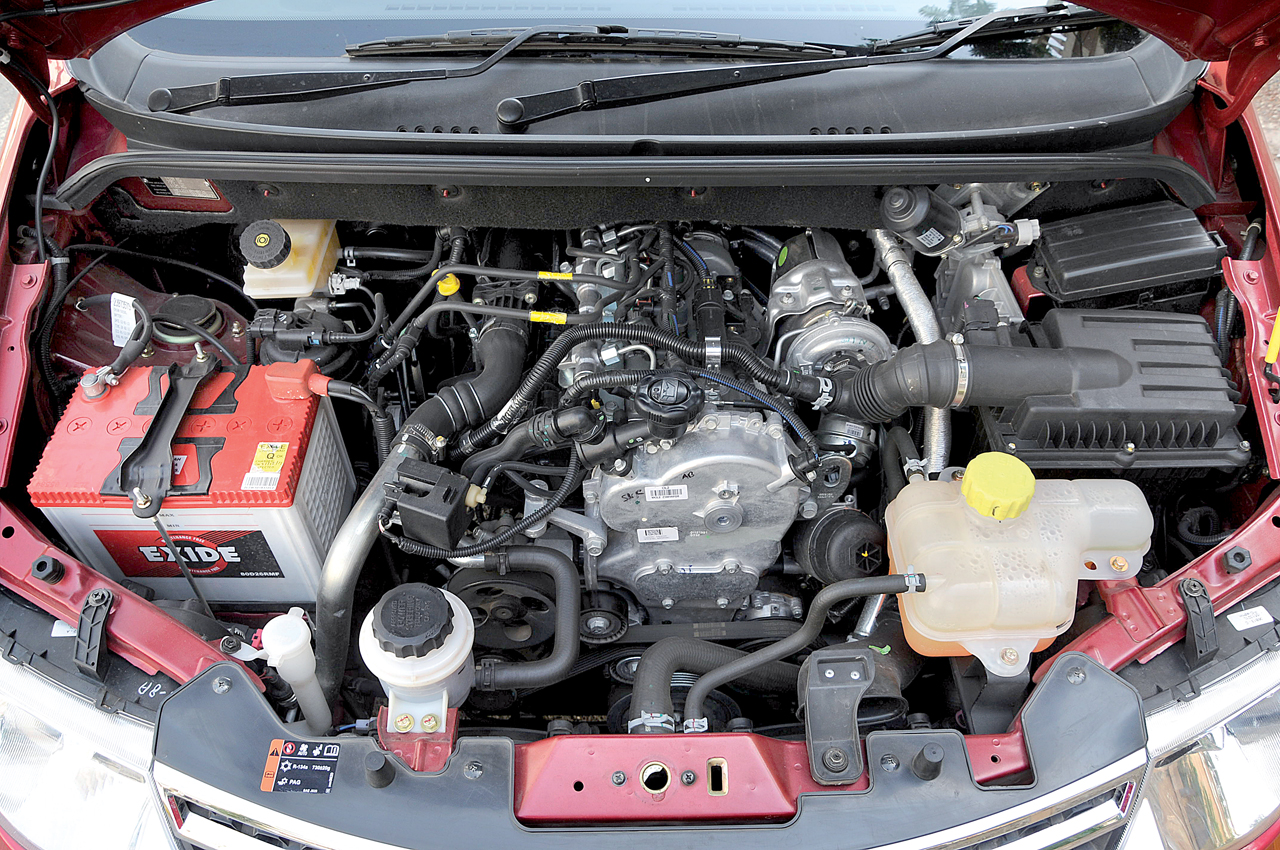Overview
We are a country of 1.2 billion people with plenty of large families. So, when the need for travel arises, vehicles like the two you see here are best suited to the purpose.
Both these compact MPVs can seat seven in reasonable comfort, are nimble enough for city use and impressively light on the wallet. The Enjoy wins round one off the bat with its astonishing sticker price. Petrol versions start at Rs 5.49 lakh and this top-end diesel LTZ comes in at Rs 7.99 lakh. The popular Ertiga, which starts at Rs 5.98 lakh and goes on to Rs 8.7 lakh for the diesel ZDi, is significantly more expensive. But owners, who will spend long hours with their families in these MPVs, will want more than just a cheap sticker price. Ease of use, a comfortable cabin and loads of practicality are high up on the list too. So which one better suits the one-size-fits-all template that customers expect from these MPVs?




